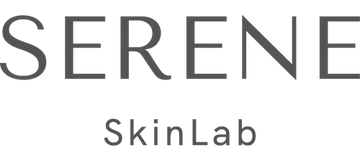Understanding TCM Beauty
Traditional Chinese Medicine is a type of medicinal practice that has over 5000 years of history, originating from ancient Chinese times. TCM considers the laws of nature, the environment around us and the natural physical response of our body to help create a balance in order for the body to heal itself. The common methods of treatment are: Use of Herbal medicines, Acupuncture, Tui Na/ Massage, Cupping and Qi Gong. Our body has the capability to heal itself: Role of treatment is primarily to remind the body of its own natural function and how it’s supposed to be functioning so it’s restored to its original healthy functioning state.
The natural balance of the body can be swayed because of emotional states such as stress, sadness, anxiety, stress, anger, fear or loss, heartache, poor nutrition, weather conditions, congenital factors, trauma or infections. This is important to understand because we can stop, assess our situations, change what we need to, listen to our body and create a change to avoid chronic imbalance.
Overall, TCM has a very unique approach to viewing the body, the mind, the soul and the environment.
There are 3 main concepts of TCM – Qi Theory, Yin Yang Theory & the 5 Elements Theory. In order to understand TCM, we have to understand these 3 theories.
中医,指以中华民族人民在长期的生产与生活实践中认识生命、维护健康、战胜疾病的临床宝贵经验总结,创造的传统医学为主的医学,是研究人体生理、病理以及疾病的诊断和防治等的一门深渊糸统学科。中医诞生于原始社会,至今有近五千年发展史。
中医学以阴阳,五行,精气学说作为理论基础,将人体看成是统一合体,通过“望闻问切”四诊合参的方法,分析病因病机及人体五脏六腑、气血津液的变化、以辨证论治原则,制定中药治法,兼使用中药、针灸、推拿、按摩、拔罐、气功、食疗等多种治疗手段,使人体达到阴阳调和而康复。
Introduction 中医简介
1. Body as a whole 整体观念
The body is viewed as an organic entity that is whole and connected and self-regulating and self-healing. Core internal organs (Zang) are connected to their related external organs (Fu) through a complicated network of channels and collaterals.
The functional physiological activities of the Zang-fu organs may not be related, but they work in coordination. There exists an organic connection between the organs and their related tissues. Pathologically, a dysfunction of the zang-fu organs may be reflected on the body surface through the channels and their collaterals (e.g. pimples on skin). At the same time, diseases of body surface tissues may also affect their related zang or fu organs. Affected zang or fu organs may also influence each other through internal connections. Traditional Chinese medical treatment consists of regulating the functions of the zang-fu organs in order to correct pathological changes at the root of the problem. Our body & mind forms the basis of life with interdependence on each other, without each life ceases to exist.
人体是一个有机整体。人体是一个內外联系,自我调节和自我适应的有机整体。人体是由若干脏腑、形体、官窍组成的,而各个脏腑、形体和官窍各有不同的结构和功能,但它们不是孤立的、肢解的、彼此互不相关的。它们是相互关联、相互制约和相互为用的。因此,各个脏腑形体官窍,实际上是人体整体结构的一部分;各个脏腑形体官窍的功能,实际上是整体功能的一部分。
即五脏一体观;以五脏为中心,通过经络系统"內属于腑脏,外络于肢节"的联络作用,构成了肝、心、脾、肺、肾五个生理系统。 又形神一体观:形体与精神是生命的两大要素,二者既相互依存,又相互制约,是一个统一的整体。
2. Body & environment as a whole人与自然环境的统一性
The body is seen as an organic entity that is part of the environment (an even bigger organic entity) around us. The body constantly interacts with the environment. Hence any changes in the natural environment may directly or indirectly affect the body. For example, changes of the four seasons & different geographical environments can influence differences in body constitution. These environmental factors must also be considered when diagnosis and treatment are given because the body can react differently during different seasons. The principles of treatment are therefore expected to accord with the different seasons and environments. The way our skin behaves when we are in a hot & humid climate versus a cold and dry climate is different. So we must adapt our way of life to our external surroundings.
即"天人一体";人类生活在自然界中,自然界存在着人类赖以生存的必要条侏件。自然界阴阳二气处于不断的运动变化之中,故人体的生理活动必受天地气侯转变的影响而有相应的变化。因而在疾病的防治过程中,必须重视外在自然环境与人体关系,在养生防病中顺应自然规律,在治疗过程中遵循因时因地制宜原则。
3. Same same but different 同病异治与异病同治
In Chinese medicine, different diseases may get the same kind of treatments and same diseases may be treated differently in different patients. This could due to the root cause of the disease being the same but manifested in different way in different bodies. Or it could also be due to the fact that same symptoms but with a different root cause and also due to the fact that different bodies have different constitution. Hence, it’s customized to the individual.
同病异治,指同一种病,由于发病的时间、地域不同、或所处的疾病的阶段或类型不同,或病人的体质有异,故反映出的证候不同,因而治疗也就有异。
异病同治,指几种不同的疾病,在其发展变化过程中出现了大致相同的病机,大致相同的证,故可用大致相同的治法和方药来治疗。
因此,中医学诊治疾病的着眼点是对证候的辨析和因证候而治。证同则治同,证异则治异,是辨汪㓆治的精神实质。
TCM Theories医学理论
1. Theory of Qi 精气学说
Qi is the energy that flows within us. It is the energy, a force that maintains life. Qi can be inherited and also produced by our body. The flow of Qi drives all our body functions: blood circulation, metabolism, exchange of energy, absorption of nutrients and basically life itself. Without Qi, there is no movement and hence life ceases. It is commonly said: when Qi is abundant & flowing freely – one will not fall sick. Only with abundant Qi can a woman stay healthy, youthful and beautiful, like a flower in bloom.
中医学的精气学说是研究人体內精与气的內涵、来源、分布、功能、相互关系、以及与经络关系的系统理论。
精,又称精气,是指藏于脏腑中的液态精华物质,是构成人体和维持人体生命活动的最基本物质。既包括父母遗传的生命物质,称先天之精;又包括后天水谷之精,称后天之精。
气,是指人体内生命力很强,不断运动且无形可见的极细微物质,既是人体的重要组成部分,又是激发和调控人体生命活动的动力源泉,感受和传递各种生命信息的载体。气的不断运动,推动和调控着人体內外的新陈代谢,激发着物质与能量的转化,负载和传递着生命信息,推动和调控着脏腑的机能,从而维系着人体的生命进程。气的运动停止,则意味着生命的终止。
气血充盈,通畅 百病不生。女人气血充足才能·容颜常驻,貌美如花.
2. Theory of Yin & Yang 阴阳学说
In Chinese philosophy, the expression of yin and yang translates to the understanding of opposite forces that have an interconnected, complementary and interdependent relationship. These opposite forces complement each other and cannot exist without their opposite. There is no Yin without Yang and there is no Yang without Yin.
The body's organs and tissues can be classified according to yin yang theory based on their functions and locations. Good health is achieved when yin and yang are in harmony. Application of Yin and Yang theory in TCM helps us to harmonize our body, mind, emotions, and spirit, and also harmonize our individual energies with nature.
The yin organs include the liver, heart, spleen, lungs and kidneys. The function of the yin organs is to produce, transform, regulate and store fundamental substances such as Qi, blood, and body fluids. The six yang organs are made up of the gall bladder, stomach, small intestine, large intestine & bladder. The yang organs are mainly responsible for digesting food and transmitting nutrients to the body.

阴阳学说,是研究阴阳的内涵及其运动变化规律,并用以阐释宇宙间万物的发生,发展和变化的一种哲学理论。阴阳学说认为世界是物质性的整体,世界本身是阴阳二气对立统一的结果。阴阳二气的相互作用,促成了事物的发展和变化。
阴阳学说作为中医学特有思维方法,广泛用来阐释人体的生命活动,疾病的发生原因和病理变化,并指导着疾病的诊断和防治。
人体是一个有机整体。组成人体的所有脏腑经络形体组织,既是有机联系,又都可以根据其所在部位、功能特点划分为相互对立的阴阳两部。
脏腑形体分阴阳,五脏属里,藏精气而不泻,故肝、心、脾、肺、肾为阴。六腑属表,传化物而不藏,故胆、小肠、胃、大肠、膀胱为阳。
总之,人体脏腑经络及形体组织结构的上下、內外、表里、前后各部之间,无不包含着阴阳的对立统一。它们之间对立关糸又存在着动态中的阴阳平衡状态。阴阳的交互作用包括:阴阳交感、对立制约、互根互用、消长平衡、相互转化。
3. The 5 Elements Theory五行学说
The 5 elements theory: Wood, Fire, Earth, Metal and Water. Each element generates (生) and controls (克) and is generated and controlled. Each element has its complementary force and cannot exist without the others. Each organ is classified into an element. When there is imbalance of a particular element, this results in the manifestation of disease or symptoms. The aim of treatment is to achieve a balance & harmony to maintain a healthy state.
五行学说 即用木、火、土、金、水五种物质及其运动变化,以五行哲学范畴来概括客观世界中的不同事物属性,并用五行相生相克的动态模式来说明事物间的相互联系和转化规律。五行学说中以五脏配五行即:肝与木、心与火、脾与土、金与肺、水与肾。五脏与五行相生相克应保持相对平衡和稳定,和谐相处。如果五脏与五行发生失调,出现太过、不及或反侮,也会致疾病的发生,这对于推断疾病的好转和恶变,治疗方法,提供了充足依据。中医主要运用五行学说阐述五脏六腑间的功能联系以及脏腑失衡时疾病发生的机理,也用以指导脏腑疾病的治疗。
五行于中医则体现了具备这五种属性的人体五大系统的相互关系。木火土金水分别代表肝心脾肺肾所统领的五大系统。中医是研究人体整体的各个系统之间的动态关系,以五行的交互作用包括:相生、相克、制化、胜复、相侮、相乘、母子相及,通过中药,针灸,按摩,心灵作用去调节各个系统之间的动态平衡,以此保持身体健康。

